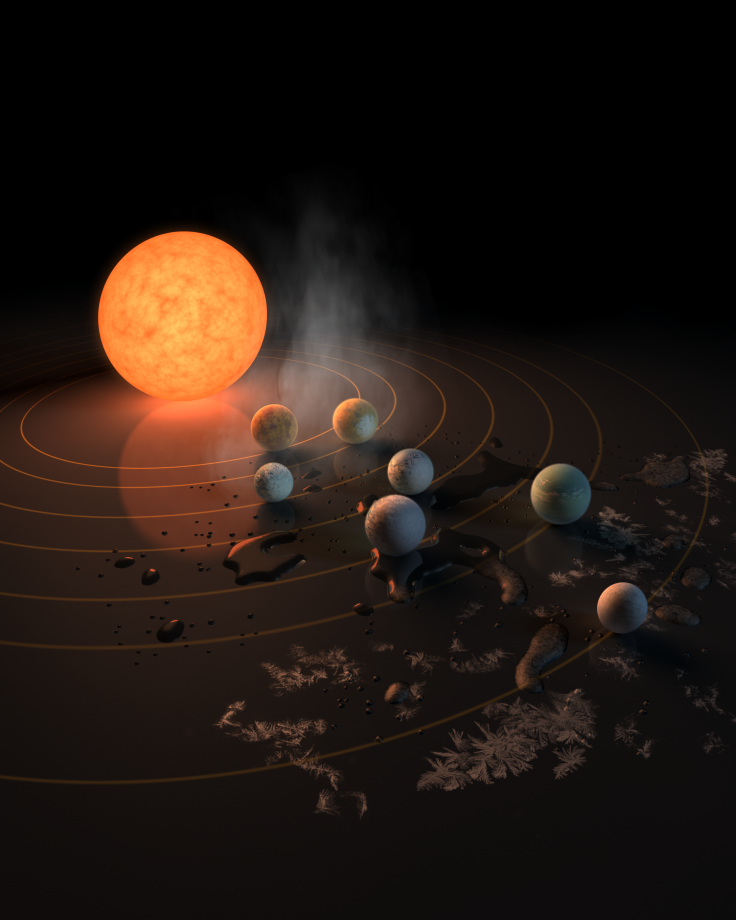NASA's Kepler Observes TRAPPIST-1: First Images Of Red Dwarf Show Dips In Star's Light Output

When the Voyager 1 spacecraft snapped an image of Earth from the edge of the solar system, it showed our planet as a lonely speck suspended in a beam of sunlight. The "pale blue dot" photograph, captured from a unique and distant vantage point, served, among other things, to highlight the vastness of the universe and the insignificance of Earth in the cosmic scale of things.
Now, astronomers have used NASA’s planet-hunting Kepler Space Telescope to capture what can be referred to as a pale white dot image of a nearby alien solar system — TRAPPPIST-1. The image — a collection of flickering pixels, shows dips in brightness of light being emitted by the red dwarf star as planets pass in front of it. The white square in the center of the image is the star.
via GIPHY
“Called a target pixel file, the image covers an area of 11 square pixels or 44 square arcseconds of the sky. This area is equivalent in size to holding up a grain of sand at arms length towards the sky,” NASA explained in a statement released Saturday. “Astronomers use sophisticated algorithms to search the data for these dips in brightness, and in particular, to correct for the spacecraft’s small movements in space — this is the 'flickering' of the pixels seen in the movie.”
Read: Red Dwarfs: The Cradle Of Alien Life?
The Kepler Space Telescope, launched in 2009, has so far detected nearly 3,500 confirmed exoplanets and 578 multi-planet systems. The TRAPPIST-1 star system was studied between Dec. 15 and March 4 as part of the K2 mission’s Campaign 12, which involved monitoring the system for 74 days.

“We were lucky that the K2 mission was able to observe TRAPPIST-1. The observing field for Campaign 12 was set when the discovery of the first planets orbiting TRAPPIST-1 was announced, and the science community had already submitted proposals for specific targets of interest in that field,” Michael Haas, science office director for the Kepler and K2 missions, said in a separate statement.
The TRAPPIST-1 system is the first known star system containing seven Earth-sized planets, three of which reside in habitable zone of the red dwarf — a region that has just the right temperature for liquid water to exist on the surface. The discovery of the seven planets around the red dwarf — announced last month — was made using the Transiting Planets and Planetesimals Small Telescope (TRAPPIST) and the Very Large Telescope (VLT) in Chile and NASA’s Spitzer Space Telescope.
Further observations of the star system will be carried out using NASA’s James Webb Telescope, which is to be launched in 2018. These observations could would help scientists determine whether these seven exoplanets can sustain life as we know it.
© Copyright IBTimes 2025. All rights reserved.





















